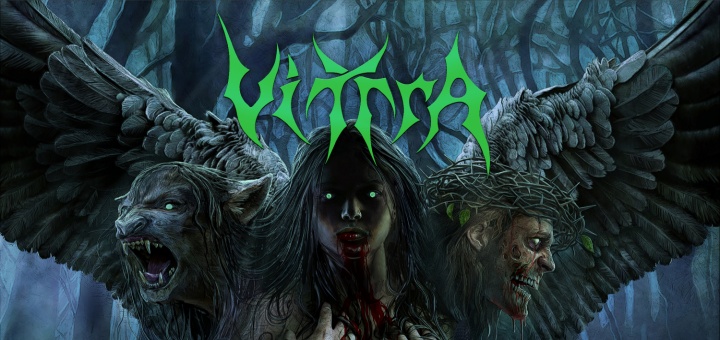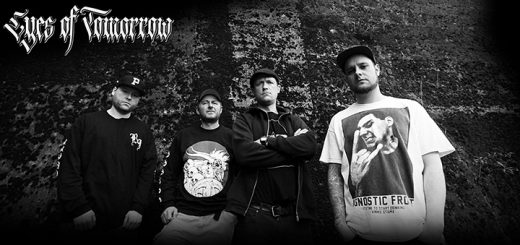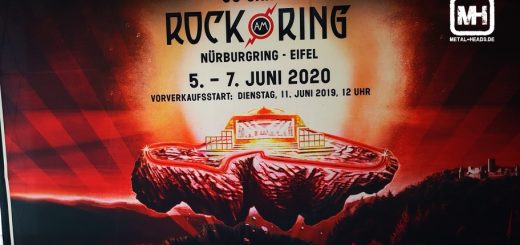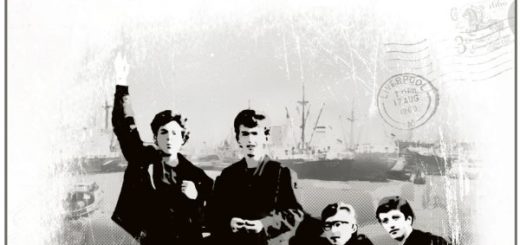VITTRA-Interview zum neuen Album „Blasphemy Blues“

(English version below)
Erst bunt, dann düster
MH: Hallo David und Johan. Im Frühjahr letzten Jahres habt ihr mit VITTRA (Facebook) die Debüt-EP „Wardens“ (Review) veröffentlicht, die großes Aufsehen erregte. In einem Interview (Link) habt ihr damals verraten, dass euer Bandname auf einer Romanfigur basiert, die die schwedische Autorin Astrid Lindgren in „Ronja Räubertochter“, geschaffen hat. Außerdem habt ihr euch von mythischen Kreaturen aus schwedischen Volksmärchen inspirieren lassen.
Euer Cover-Artwork von „Wardens“ ist ziemlich bunt und könnte auch ein Kinderzimmer schmücken. Das würde ich mit dem neuen Cover-Artwork von „Blasphemy Blues“ nicht mehr empfehlen. Jetzt ist es sehr dunkel und gruselig.
Was hat es mit dieser geheimnisvollen dunklen Hexenkreatur auf sich? Gibt es ein Märchen oder eine Legende darüber?

„WARDENS“ 
„BLASPHEMY BLUES“
David: Für mich persönlich war es sehr schwer, einen roten Faden während der gesamten Entstehung des Albums zu behalten, und als wir dann versuchten, alles zusammenzufügen, dachte ich an einen Engel namens Cherub. Das sind hybride Engel mit verschiedenen Kreaturen, die zu einer Einheit verschmolzen sind, und so ist auch unsere Musik, metaphorisch gesprochen. Ein Song handelt von einem Werwolf, einer von der Waldnymphe, Banshee oder wie auch immer sie heißen mag. Auf Schwedisch heißt das „Skogsrå“. Und natürlich taucht Zombie Jesus wieder auf, daher der Blickwinkel.
Eine Frage des Blickwinkels
MH: Auch Songtitel wie „Lykantropi“ deuten darauf hin, dass es in den Liedern um Mythologie und Fabelwesen gehen könnte?
David: Wenn man es von Anfang bis Ende liest, weiß man sofort, dass es um einen Werwolf geht, aber wenn man stattdessen innehält und einen Moment nachdenkt. Wer ist der Mörder in dieser Geschichte? Ist es der Werwolf, derjenige, der ihn jagt, oder könnte es derjenige sein, der sie gerade liest? Was rechtfertigt das Töten?
Ein kurzer Rückblick
MH: Wie passt der Albumtitel „Blasphemy Blues“ dazu?
David: Tut er eigentlich nicht, oder? Aber er rollt so gut auf unserer Zunge.
Johan: Genau wie beim Cover wollten wir einen Titel, der die Songs irgendwie zusammenfasst, wir haben mit allem möglichen herumgespielt, von Morbid Tales bis Bedtime Stories, bis wir schließlich bei Blasphemy Blues gelandet sind.
MH: Nenne uns doch mal einen großen Bluesmusiker, der dir spontan einfällt.
David: Ich würde sagen, Lars Elofsson! Er ist wahrscheinlich einer der größten Bluesmusiker, die ich je getroffen habe.
MH: Haha… der eigene Live-Gitarrist von VITTRA! Sehr lustig.
Kommen wir kurz zurück zu eurer Debüt-EP „Wardens“. Euer Erfolg war natürlich auf die insgesamt großartigen Songs auf der EP zurückzuführen. Aber vor allem die Single „Necrotic Apocalypse“ war sehr erfolgreich und wurde ein echter Hit bei den Fans. Inwieweit konntet ihr seither auch live auftreten? Hat sich dort bestätigt, dass „Necrotic Apocalypse“ der beliebteste Song ist?
David: Auftritte leider nicht genug! Natürlich bin ich insgesamt mit den bisherigen Ergebnissen zufrieden, aber es gibt immer das Verlangen nach mehr.
Johan: Es ist definitiv ein Song, der live sehr gut ankommt! Also ja, es ist der direkteste und wir spielen ihn eher gegen Ende der Shows.
MH: Wie sehr hat euch dieser Erfolg des Songs überrascht?
Johan: Es ist so schwer vorherzusagen, man mag vielleicht einen Song in seinem Kopf, aber er funktioniert nicht im Studio, man mag ihn im Studio, aber er funktioniert nicht live und so weiter. Aber wir mögen es und sind froh, dass andere es auch zu tun scheinen.
Zwischen Dream Theater und Megadeth
MH: Nun kann eine so originelle Idee nicht noch einmal verwendet werden. Aber auf dem neuen Album ist der Song „Sommarfödd“, der mir gleich beim ersten Durchhören aufgefallen ist. Für mich ein wirklich genialer Song, der wieder einmal mit einer wunderbaren Kombination von ungewöhnlichen Ideen begeistert. Für mich spielt er in der gleichen Liga wie „Necrotic Apocalypse“, auch wenn er völlig anders klingt.
Was hat dich zu diesem Song inspiriert? Worum geht es in dem Song?
Johan: Danke! Die Musik ist eigentlich schon ziemlich alt. Ich habe die Hauptteile schon vor langer Zeit geschrieben. Ich würde sagen, es ist eine Mischung aus Dream Theater und Megadeth. Als wir ihn dann in Vittra aufnahmen, passten wir die Strophe an, um ein paar Black-Metal-Elemente hineinzubekommen, und da David Angst hatte, dass das Intro/Hauptriff ein bisschen zu sehr nach „Walk“ klingen würde, was er nicht mag, hatten wir die Idee, eine Art Gesangslinie mit einer anderen Stimme hinzuzufügen. Wir sind aber bei der Melodie hängen geblieben, und dann hat David mit seiner Mutter gesprochen, die die Grundlage dafür geschaffen hat. Den „uhm-a“-Teil habe ich David gebeten, im Studio hinzuzufügen. Ich glaube, er war ziemlich skeptisch (wie bei Necrotic), aber am Ende ist es gut geworden!
David: In Sommarfödd geht es um meine Hassliebe zum schwedischen Wetter. Die meiste Zeit des Jahres ist es einfach nur dunkel, nass und kalt. Etwas weiter nördlich gibt es Schnee, der ein paar Monate lang liegen bleibt. Der ganze Song handelt also von der Sehnsucht nach dem Frühling, und wenn er dann endlich kommt, lebt man das Leben in vollen Zügen, so dass man sich an kaum etwas erinnert, was man getan hat, und dann ist wieder Winter. Dunkel, nass, kalt und manchmal Schnee.
Mehr Thrash
MH: Auf der EP „Wardens“ hatten die Songs bis auf „Necrotic Apocalypse“ teilweise eine vertracktere Struktur. Auf dem neuen Album sind die neuen Songs homogener und damit eingängiger und dynamischer geworden, mehr nach dem Vorbild von „Necrotic Apocalypse“. Hatte dieser Song einen Einfluss auf das Songwriting?
Johan: Es gibt definitiv eine gewisse Entwicklung, aber ich bin mir nicht ganz sicher, wie es dazu kam. Meine Idee ist es, Songs zu schreiben, bei denen es einen natürlichen, aber nicht zu offensichtlichen Fluss gibt. Wir haben uns auch als Musiker seit der EP, die 2019 aufgenommen wurde, weiterentwickelt. Also ist das auch ein Grund dafür.
MH: Ich würde also sagen, dass der Thrash-Einfluss größer geworden ist. Ich würde es Melodic-Death-Thrash-Metal nennen, wenn man unbedingt nach einer Kategorisierung oder Klassifizierung sucht. Würdest du das bestätigen?
Johan: Vollkommen einverstanden! Melodic Death/Thrash mit einem leichten Hauch von Black.
Spaß an neuen Dingen
MH: Die Songs haben insgesamt, besonders in den Soli, eine sehr rockige Note. Die Gitarrenarbeit, die schon auf „Wardens“ gut war, hat meiner Meinung nach einen weiteren Schritt nach vorne gemacht, und die genialen Soli müssen auch hervorgehoben werden.
Würdet ihr sagen, dass ihr euren Sound gefunden habt? Oder seid ihr gar nicht auf der Suche danach, sondern lasst eurer Kreativität einfach freien Lauf?
David: Der Sound fängt wirklich an, Form anzunehmen, er ist eher fließend und manchmal fest. Wir machen die Dinge so, wie wir sie wollen, und es muss immer Spaß machen. Es macht Spaß, neue Dinge auszuprobieren.
Johan: Ich denke, wir lassen hauptsächlich unserer Kreativität freien Lauf. Der Sound ist wirklich eine Kombination aus unseren individuellen Spielstilen. Wenn es um die Soli geht, muss ich unbedingt Lars als unseren Studio/Live-Session-Gitarristen erwähnen. Er ist wirklich brillant, sowohl beim Schreiben als auch beim Spielen von Soli! Sein Beitrag treibt mich an, mich ebenfalls weiterzuentwickeln.
So soll es sein!
MH: Der Song „Satmara“ beginnt mit einem lebhaften akustischen Gitarrensolo. Hatte der Song seinen Ursprung darin?
Johan: Ja, es begann alles mit der Melodielinie und den Harmonien, als ich auf meiner Akustikgitarre herumspielte. Dann fügte ich die Akkorde hinzu und es wuchs von da an. Das Intro war eigentlich nur als Teaser für die sozialen Medien gedacht, aber dann fügte Lawrence, der den Mix gemacht hat, es dem zweiten oder dritten Mix hinzu, den wir bekamen, und sagte: „So sollte es sein“, und er hatte Recht!
MH: Wie viele Singles wird es bis zur Veröffentlichung geben? Können wir uns schon etwas im Kalender markieren?
Johan: Ich denke, dass wir bei Veröffentlichung dieses Interviews schon bei der dritten Single sein könnten. Das komplette Album werden wir Euch am 11. November präsentieren.
English version

First colorful, now gloomy
MH: Hello David and Johan of VITTRA (Facebook). In spring last year your debut EP „Wardens“ (Review) was released, which immediately caused a great stir. In an interview (link) back then, you revealed that your band name is based on a character created by Swedish author Astrid Lindgren in „Ronja the Robber’s Daughter“. You were also inspired by mythical creatures from Swedish folk tales.
Your cover artwork of „Wardens“ was quite colorful and could also hang a children’s room. Since I would not recommend more with that cover artwork of the new album „Blasphemy Blues“. Now it is very dark and creepy.
What is this mysterious dark witchy creature all about? Is there a fairy tale or a legend about it?

„WARDENS“ 
„BLASPHEMY BLUES“
Eine Frage des Blickwinkels
David: For me personally it was very hard to keep a red thread throughout the whole creation of the album, so when we got to part of trying to stich everything together I thought of an angel called Cherub. They are hybrid angels with different creatures mashed together as one and so is our music, speaking metaphorically.
MH: Also song titles like „Lykantropi“ suggest that the songs could be about mythology and mythical creatures?
David: If you read it from start to finish you will instantly know it’s about a werewolf, but if you instead stop and think for a moment. Who’s the killer in this story? Is it the werewolf, the one hunting it or could it be the one reading it at this moment? what justifies killing?
Another song is about the wood-nymph, banshee whatever the name is. In Swedish it’s “Skogsrå”. And of course Zombie Jesus reappears hence the angle.
A brief retrospective
MH: How does the album title „Blasphemy Blues“ fit in?
David: It really doesn’t, does it? But it rolls so good on top of our tongue.
Johan: Same as with the cover we wanted a title that sort of summarizes the songs, we were playing around with everything from Morbid Tales to Bedtime Stories, until we ended up with Blasphemy Blues.
MH: Name a great blues musician off the top of your head.
David: I’d say Lars Elofsson, he’s probably one of the greatest blues musicians I’ve ever met.
MH: Haha… VITTRA’s own live guitarist! Very funny. Let’s briefly come back to your debut EP „Wardens“. Your success was of course due to the overall great songs on the EP. But first of all the single „Necrotic Apocalypse“ was very successful and became a real hit with the fans. To what extent have you been able to perform live since then? Was it confirmed there that „Necrotic Apocalypse“ is the most popular song?
David: Not enough sadly, of course I’m happy with the results so far but there’s always that aspiration for more.
Johan: It’s definitely a song that goes down really well live! So yes, it’s the most direct and we tend to play it towards the end of the shows.
MH: How much did this success of the song surprise you?
Johan: It’s so hard to predict, you might like a song in your head but it doesn’t work in the studio, you might like it in the studio but it doesn’t work live and so on. But we like it and are happy that others seem to do it as well.
Between Dream Theater and Megadeth
MH: Now such an original idea can’t be used again. But on the new album is the song „Sommarfödd“, which caught my attention immediately on the first listen through. For me, a really ingenious song that once again inspires with a wonderful combination of unusual ideas. For me it plays in the same league as „Necrotic Apocalypse“, even if it sounds completely different.
What inspired you to write this song? What is the song about?
Johan: Thanks! The music is quite old actually, I wrote the main parts a long time ago. I would say it’s a mixture of Dream Theater meets Megadeth. Then when we picked it up in Vittra we adjusted the verse to get a bit of the black metal elements in there, and then since David was afraid that the intro/main riff was going to be a bit too much of “Walk”, that he doesn’t like, we had the idea of adding some sort of vocal line to it with a different voice. We got stuck on the melody though and then David talked to his mother who was the one that came up with the foundation. The “uhm-a”-part is something I asked David to add in the studio. I think he was quite skeptical (as with Necrotic) but it turned out good in the end!
David: Sommarfödd is about my love/hate relationship towards Swedish weather. Most of the year it’s just dark, wet and cold a bit further north you’ll get some snow that lasts for a couple of months. So the whole song’s about a yearning for spring and when it finally comes you live life the fullest so you barely remember a single thing you did and then it’s winter again. Dark, wet, cold and sometimes snow.
More thrash
MH: On the EP „Wardens“ the songs partly had a more intricate structure, except „Necrotic Apocalypse“. On the new album, the new songs have become more homogeneous and thus catchier and more dynamic, more along the lines of „Necrotic Apocalypse“. Did this song have an impact on the songwriting of the new songs?
Johan: There is definitely some development but not fully sure how it happened. My thinking is to create songs where there is a natural flow, though not too obvious. We have also developed as musicians since the EP that was actually recorded in 2019 so that’s part of the explanation as well.
MH: So I would say that the thrash influence has become bigger. I would call it Melodic-Death-Thrash-Metal, if you are necessarily looking for a categorization or classification. Would you confirm that?
Johan: Fully agree! Melodic Death/Thrash with a slight touch of Black.
Fun in new things
MH: The songs overall, especially in the solos, a very rocky note. The guitar work, which was already good on „Wardens“, has taken another step forward in my opinion, and the brilliant solos must also be emphasized.
Would you say that you have found your sound? Or are you not searching for it at all, but just letting your creativity run free?
David: The sound is really starting to take shape, it’s more like a fluid thing and sometimes solid. We do things our way the way we want it and it always has to be fun. It’s fun trying out new things.
Johan: I think we are mainly letting our creativity run free. The sound is really the combination of our individual playing styles. When it comes to the solos I really need to mention the addition of Lars as our Studio/Live session guitarist. He’s really brilliant, both at writing and playing solos! Having him contributing pushes me to develop as well.
This is how it should be
MH: The song „Satmara“ begins with a lively acoustic guitar solo. Did the song have its origin in this?
Johan: Yes, it all started with the melody line/harmonies when I was playing around on my acoustic guitar. Then I added the chords and it grew from there. The intro was actually intended only as a teaser for social media but then Lawrence who did the mixing added it to the second or third mix that we got and said “This is how it should be” and he was right!
MH: How many singles will there be until the release? May we already mark something in the calendar?
Johan: Think we might be up for single number three now (28 October) and then we go for the full album 11 November.
NEWSLETTER. FREITAGS. KOSTENLOS.
Bildquellen
- VITTRA – Cover Artwork Wardens skaliert: VITTRA
- Vittra – Cover Artwork Blasphemy Blues: VITTRA
- Vittra – Blasphemy Blues Titelbild: VITTRA




























Neueste Kommentare